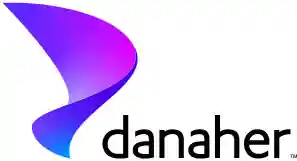Drone flight management systems keep track of and manage the data pertaining to a drone's everyday operations. They are also in charge of monitoring the drones' actions and reporting any recurring or anticipated problems that might impair their ability to perform as intended.
Global Drone Flight Management System Market Driving Factors and Challenges
One of the major factors boosting the market growth for drone flight management systems is a rise in the legal acceptability of drone operations for commercial purposes. Drone usage is governed by legal authorizations. Regulations regarding the use of drones for business have been established. Governmental agencies are likely to legalise commercial drone activities given the expanding applications of drones. Aside from that, there are five different ways that nations throughout the world regulate drone use: outright prohibition, effective prohibition, visual line of sight (VLOS) prerequisite, experimental BVLOS, and permissive. With the legalisation of drones by regulatory bodies, the market for drones is set to rise.
Effectively lowering the amount of time needed for land surveys are drones. Drones have also introduced innovative methods for airborne security, distribution, event planning, and video capture. The governing authorities are willingly implementing drone-supportive legislation in light of all these factors. During the projected period, this is likely to increase demand for drones and, in turn, drone flight management systems. A further factor driving the adoption of drones by e-commerce firms, logistics providers, and the industrial and construction sectors is the expanding range of drone flights. During the projected period, this will present attractive prospects for the growth of the worldwide drone flight management system market.
However, one of the things preventing the drone flight management system market from expanding is the drones' short battery life and poor capacity. The majority of drones in use today are powered by batteries. When using a drone, the battery runs out in around 30 minutes, limiting the flight distance to 10 kilometres. Drones frequently employ lithium-ion and lithium polymer (LiPo) batteries. The dimensions, capacities, and charging times of these batteries vary. The size of the battery affects the capacity of the battery. The size of the battery or the quantity of batteries must be increased for bigger capacity, which will raise the weight that the drone must support.
Drones powered by alternative energy sources are becoming more common due to their short battery lives. Drone makers have the option of employing solar power or hydrogen fuel cells, but producing affordable, portable drones with these energy sources is extremely difficult. Since commercial drones typically have a small carrying capacity, logistics companies have not yet used drones to deliver heavy packages. The main obstacles that drone producers face include increasing the load-carrying capacity, decreasing the overall cost of drones, and extending drone battery life. During the projection period, these factors are anticipated to restrict the uptake of drone flight management systems.
Impact of COVID-19 on Global Drone Flight Management System Market
The drone market has suffered greatly as a result of the COVID-19. It is projected that the recent global economic slowdown will cause end-user industries like construction, mining, etc. to experience a consequent fall in demand for drones. The demand for drones has, however, increased quickly due to their wide range of potential uses. The large corporations' exposure to the full brunt of the pandemic's wider supply chain disruption has been reduced thanks to the existing restrictions and procedures. Companies, however, are more susceptible to supply chain interruptions and are expected to experience operational limitations as well as high financial risk exposure as a result of supply chain bottlenecks.
Drone Flight Management System Market Key Players:
The market study provides market data by competitive landscape, revenue analysis, market segments and detailed analysis of key market players such as; AeroVironment Inc., Autel Robotics, Black Swift Technologies LLC., DELAIR SAS, EHang Holdings Ltd., Elbit Systems Ltd., HENSOLDT AG, Intel Corp., Mobilicom Ltd, Northrop Grumman Corp., Parrot Drones SAS, Safran SA, SZ DJI Technology Co. Ltd., Teledyne Technologies Inc., Thales Group, The Boeing Co., UAV Navigation SL, UAVOS Inc., Yuneec International Co. Ltd., Others.
Global Drone Flight Management System Market Segmentation:
By Component: Based on the Component, Global Drone Flight Management System Market is segmented as; Data Link, Ground Controller, Onboard Controller.
By Region: This research also includes data for North America, Asia-Pacific, Latin America, Middle East & Africa and Europe.
This study also encompasses various drivers and restraining factors of this market for the forecast period. Various growth opportunities are also discussed in the report.






















